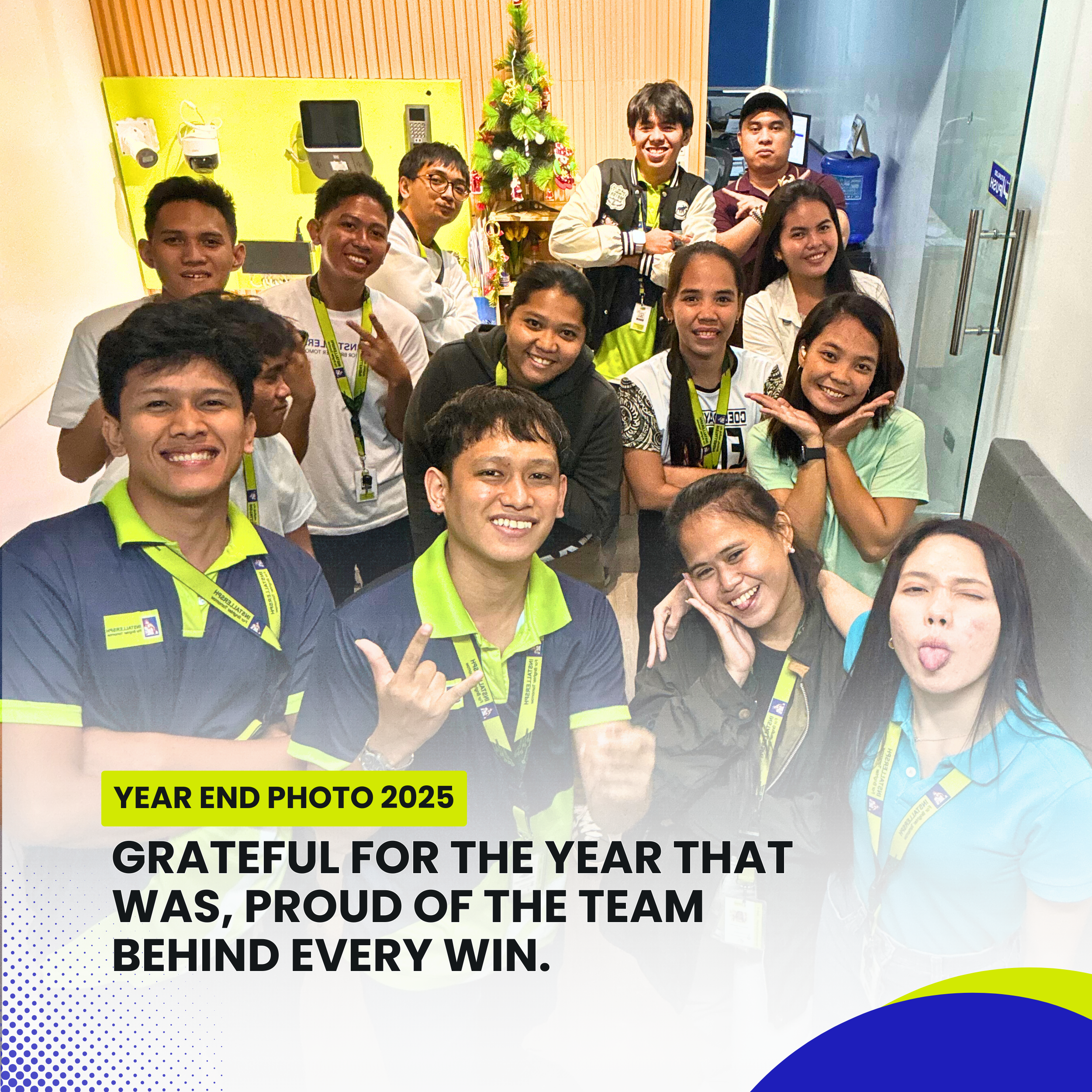Celebrating a Year of Growth and Success at InstallersPH IT Solutions. Introduction. As the year comes to a close, InstallersPH IT Solutions takes a moment to reflect on a journey defined by …
Exploring the Use of CCTV Cameras in Art Galleries and Museums for Security and Visitor Engagement.

Introduction
Art galleries and museums stand as bastions of culture, preserving humanity’s creative legacy and providing spaces for profound reflection and inspiration. However, beyond their role as custodians of art, these institutions face the ongoing challenge of ensuring the safety and engagement of their visitors. In recent years, the adoption of Closed-Circuit Television (CCTV) cameras has emerged as a prevalent solution, serving the dual purposes of security enhancement and visitor engagement. This comprehensive exploration delves into the multifaceted role of CCTV cameras in art galleries and museums, scrutinizing their impact on security measures and their potential to enrich the visitor experience.
Security Enhancement through CCTV Cameras
Artworks displayed in galleries and museums are often priceless treasures, both monetarily and culturally. Consequently, safeguarding these invaluable artifacts against theft, vandalism, or damage is paramount. CCTV cameras play a pivotal role in fortifying the security infrastructure of these institutions.
1. Deterrence
The mere presence of visible CCTV cameras serves as a potent deterrent to potential perpetrators. Knowing they are under constant surveillance, individuals with nefarious intentions are less likely to engage in criminal activities, thus significantly reducing the risk of theft and vandalism.
2. Monitoring and Surveillance
CCTV systems enable real-time monitoring of various areas within the gallery or museum premises. Security personnel can maintain vigilant oversight of high-risk zones and swiftly respond to any suspicious behavior, thereby mitigating security threats before they escalate into incidents.
3. Evidence Collection
In the unfortunate event of a security breach, CCTV footage serves as invaluable evidence for investigations and law enforcement purposes. Detailed recordings of the incident aid in identifying perpetrators and facilitating their apprehension, as well as in the recovery of stolen artworks.
4. Remote Accessibility
Modern CCTV systems offer the convenience of remote accessibility, allowing security personnel to monitor the premises from any location with internet connectivity. This feature enables proactive surveillance and swift response to security incidents, even when personnel are not physically present on-site.
5. Integration with Alarm Systems
Integration of CCTV cameras with alarm systems enhances security responsiveness. In the event of an alarm trigger, security personnel can immediately access CCTV footage to assess the situation, verify the cause of the alarm, and initiate appropriate response protocols.
6. Crowd Management
CCTV cameras aid in crowd management during peak visiting hours and special events. By monitoring visitor flow and identifying congestion points, security personnel can implement crowd control measures to ensure a safe and enjoyable experience for all patrons.
Enhancing Visitor Engagement through CCTV Cameras
Beyond their traditional role in security reinforcement, CCTV cameras have the potential to revolutionize visitor engagement and elevate the overall museum experience. When strategically deployed, these surveillance devices can offer unique perspectives and interactive opportunities for patrons.
1. Virtual Tours and Live Streams
CCTV cameras equipped with pan-tilt-zoom (PTZ) capabilities can provide virtual tours of gallery spaces, offering online visitors an immersive experience akin to exploring the museum in person. Live streaming of exhibitions and events enables a global audience to participate in real-time, transcending geographical barriers and expanding the reach of cultural institutions.
2. Artwork Close-Ups and Detailing
High-definition CCTV cameras positioned strategically near artworks allow visitors to appreciate intricate details and nuances that may not be discernible from a distance. By zooming in on specific elements of the artwork, viewers gain deeper insights into the artist’s technique and craftsmanship, fostering a greater appreciation for the piece and enriching their understanding of art history and aesthetics.
3. Interactive Installations
Integrating CCTV footage into interactive installations or digital exhibits can transform passive observation into active participation. Visitors may be encouraged to manipulate camera angles or engage in interactive challenges based on surveillance imagery, fostering curiosity, creativity, and deeper engagement with the artworks and museum content.
4. Educational Resources
CCTV recordings of conservation efforts, restoration processes, and behind-the-scenes activities provide valuable educational resources for museum patrons. By offering insights into the care and preservation of artworks, these videos enhance visitors’ understanding of the museum’s conservation efforts, the significance of cultural heritage preservation, and the interdisciplinary nature of museum work.
5. Visitor Tracking and Analytics
CCTV cameras equipped with advanced analytics software enable museums to track visitor behavior and preferences. By analyzing crowd movements, dwell times, and interaction patterns, institutions can gain valuable insights into visitor demographics and engagement levels, informing strategic decision-making and enhancing the overall visitor experience.
6. Augmented Reality (AR) Experiences
Integration of CCTV footage with augmented reality (AR) technologies offers innovative possibilities for visitor engagement. Through AR-enabled devices such as smartphones or tablets, visitors can overlay digital content onto live camera feeds, enhancing their understanding of artworks and historical contexts through immersive storytelling and interactive experiences.
7. Visitor Feedback and Participation
CCTV cameras can facilitate visitor feedback and participation initiatives. By capturing candid reactions and interactions with museum exhibits, institutions can solicit visitor input, testimonials, and creative contributions, fostering a sense of ownership and community engagement among patrons.
Challenges and Considerations
While CCTV cameras offer myriad benefits to art galleries and museums, their deployment also presents challenges and ethical considerations that warrant careful consideration and mitigation strategies.
1. Privacy Concerns
The widespread deployment of CCTV cameras raises legitimate concerns regarding visitor privacy and data protection. Institutions must establish clear policies and protocols for data collection, storage, and usage, ensuring compliance with relevant privacy regulations and respecting visitors’ rights to privacy and anonymity.
2. Artistic Integrity and Aesthetic Considerations
Balancing security requirements with the preservation of artistic integrity is essential. Careful positioning and discreet installation of CCTV cameras are imperative to minimize visual intrusion and maintain the aesthetic appeal of gallery spaces, ensuring that surveillance measures do not detract from the immersive and contemplative experience of viewing artworks.
3. Technological Limitations and Maintenance
Despite advancements in CCTV technology, limitations such as blind spots, image distortion, and connectivity issues may impact system reliability and effectiveness. Regular maintenance, calibration, and upgrades are necessary to address technical challenges and optimize the performance of CCTV surveillance systems, ensuring consistent monitoring and reliable security coverage.
4. Visitor Perception and Trust
Perception of surveillance can vary among visitors, with some viewing it as a necessary security measure and others as an intrusion on personal freedom and privacy. Transparent communication about the purpose, scope, and safeguards of CCTV surveillance is essential to alleviate visitor concerns, build trust, and foster positive relationships between museums and their patrons.
5. Ethical Use of Visitor Data
Institutions must adhere to ethical principles and best practices in the collection and utilization of visitor data captured by CCTV cameras. Safeguarding sensitive information, obtaining informed consent for data collection, and implementing robust security measures to prevent unauthorized access or misuse are paramount to maintaining the trust and confidence of museum visitors.
6. Integration with Existing Infrastructure
Seamless integration of CCTV cameras with existing security systems, museum infrastructure, and digital platforms requires careful planning, coordination, and investment in interoperable technologies. Compatibility with access control systems, alarm monitoring platforms, and digital signage networks ensures cohesive security management and visitor engagement across all museum facilities and channels.
Conclusion
The integration of CCTV cameras into art galleries and museums represents a transformative shift in security management and visitor engagement, offering unprecedented opportunities to safeguard cultural heritage and enrich the museum experience. By harnessing the capabilities of surveillance technology strategically and ethically, institutions can fortify their security infrastructure, enhance the accessibility and interactivity of museum exhibits, and cultivate deeper connections with diverse audiences. However, achieving this delicate balance requires proactive collaboration, innovation, and ethical foresight to navigate the complexities and challenges inherent in CCTV deployment within cultural institutions.
As technology continues to evolve, the role of CCTV cameras in art galleries and museums will undoubtedly expand and evolve, shaping the future of museum security and visitor engagement in profound ways. Embracing emerging technologies such as artificial intelligence, machine learning, and computer vision holds the promise of further enhancing the efficacy and versatility of CCTV surveillance systems, enabling more sophisticated threat detection, predictive analytics, and personalized visitor experiences.
Moreover, ongoing collaboration between museums, technology developers, regulatory authorities, and privacy advocates is essential to address emerging challenges, refine best practices, and uphold ethical standards in the use of CCTV cameras. By fostering a culture of transparency, accountability, and responsible stewardship of visitor data, cultural institutions can build trust and credibility with their audiences, ensuring that CCTV surveillance serves as a tool for protection and enrichment rather than a source of contention or intrusion.
In conclusion, the adoption of CCTV cameras in art galleries and museums signifies a pivotal moment in the evolution of museum management and visitor engagement strategies. By embracing innovation, embracing ethical considerations, and prioritizing the safety and satisfaction of their patrons, cultural institutions can harness the transformative potential of surveillance technology to safeguard cultural heritage, foster meaningful connections, and inspire future generations of art enthusiasts and cultural stewards. As we embark on this journey of exploration and adaptation, let us remain steadfast in our commitment to preserving the past, engaging the present, and shaping the future of art and culture for the betterment of humanity.
Related Articles
Notice to the Public: Holiday Vacation Advisory of InstallersPH IT Solutions. Introduction. InstallersPH IT Solutions is committed to providing reliable and professional IT services to all our valued clients and partners. As …
The On-the-Job Training Experience of Sherlyn Linao. Introduction On-the-Job Training (OJT) is an essential part of a student’s academic development, providing practical exposure to real workplace environments. It allows interns to apply …



